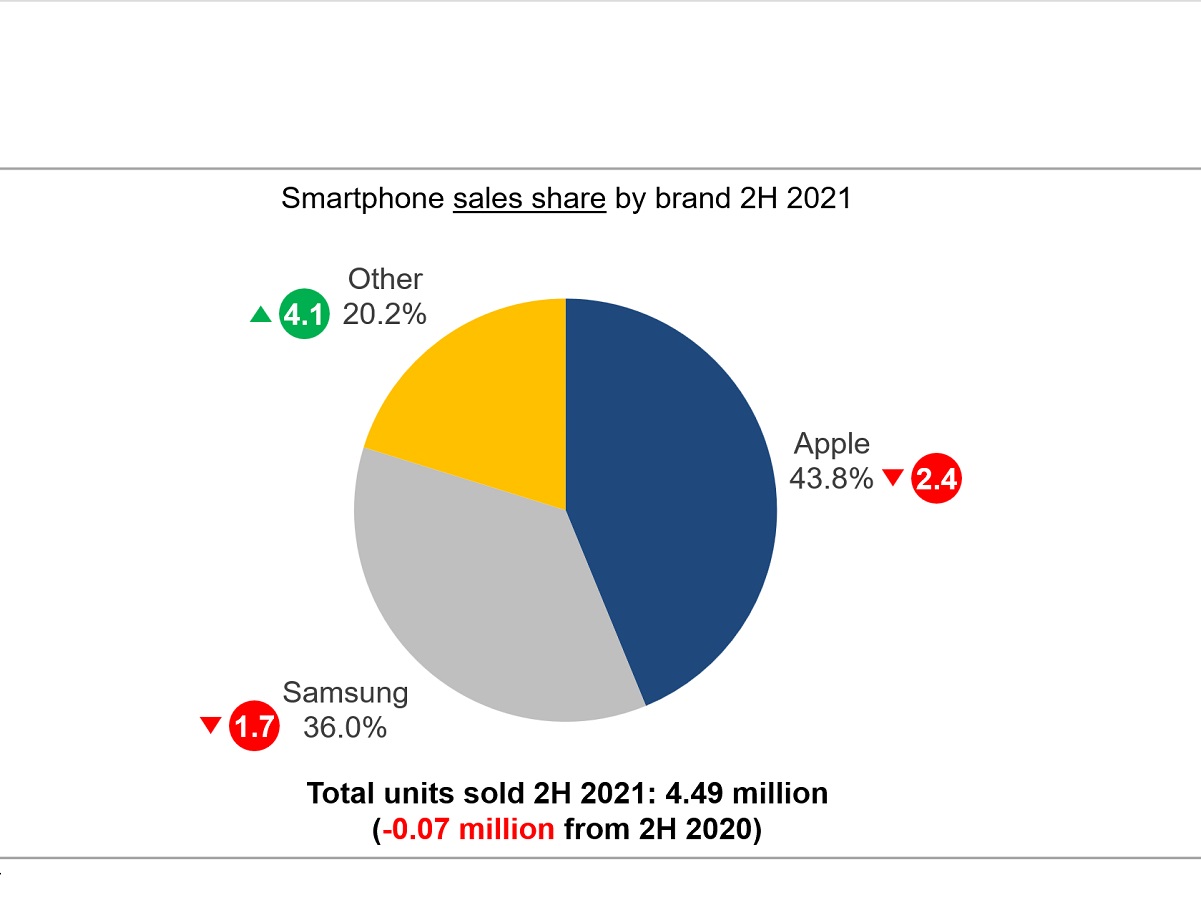The world’s leading smartphone manufacturers, Apple and Samsung, both took a hit to their Australian sales in 2H 2021 largely due to supply chain shortages and a hangover from the pandemic, according to emerging technology analyst firm Telsyte.
The Telsyte Australian Smartphone Wearable Devices Market Study 2022 found premium features such as 5G, high-refresh rate displays, and long software support have increasingly appeared in challenger brands’ mid-range offerings, putting pressure on the market leaders.
Despite overall slower sales, Samsung’s investment in the foldable category has started to pay off. Samsung is the foldable market leader and Telsyte estimates almost 10% of its Australian smartphone sales were Galaxy Z series foldables in 2H21.
Although Apple, Samsung and Oppo remained the top three smartphone vendors in 2H21, Telsyte research found Nokia, Motorola and Google branded handsets gained ground.

Unfolding the future
The study found interest in foldable smartphones is growing, particularly among Australians planning to upgrade their smartphones in 2022. Over one-quarter (26%) are interested in using a foldable smartphone, up 9% from the previous year.
Despite almost six in 10 (59%) of consumers preferring larger form factors (i.e. smartphone that folds out to a tablet), Telsyte believes lower priced flip models will sell substantially more units.
Consumer price expectations are starting to align. Among those interested in the flip and larger tablet style foldables, there is a willingness to pay an average of 16% and 29% more, respectively, than a typical premium smartphone, which is close to current offerings.
Telsyte expects better software support to be a key driver. This includes foldable-optimised mobile apps as well as improvements in the operating system, as promised by Android 12L – a feature update that optimises the user interface to take advantage of larger screens.
Telsyte believes there are untapped opportunities to shorten replacement cycles with smartphone subscriptions (sometimes called Hardware-as-a-Service). Subscription offerings see consumers paying a monthly fee for a handset that is swapped over when a new model is available.
The current average replacement cycle for smartphones is over three years in Australia, gradually edging up from 2.4 years in 2016.

